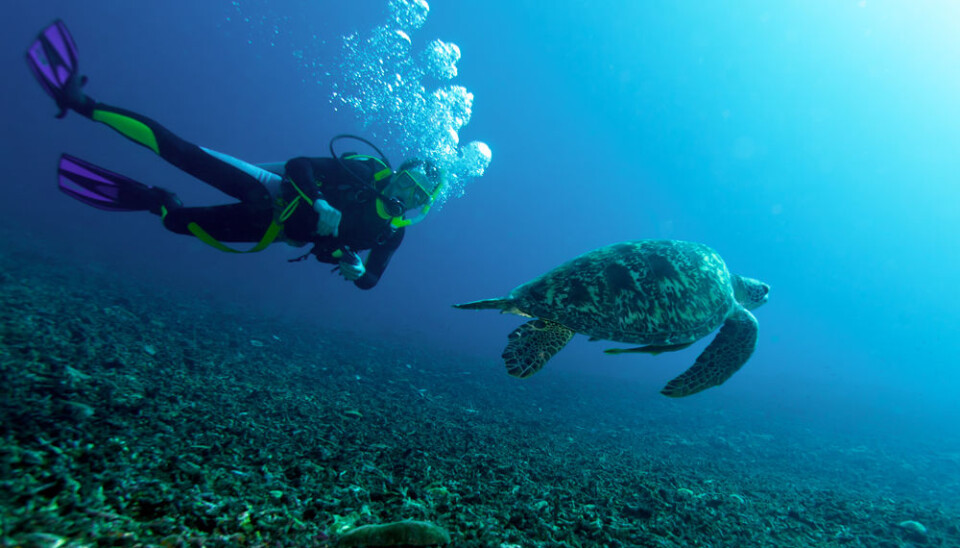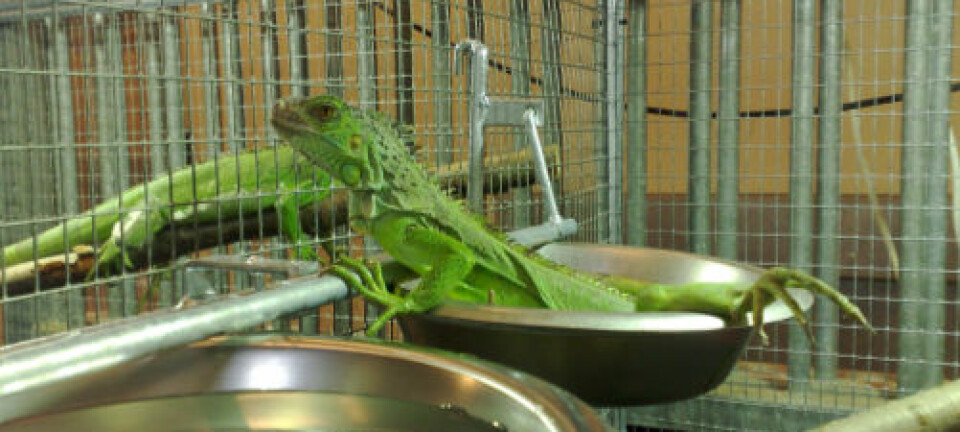
Marine reptiles closer to extinction
The number of marine reptiles has fallen sharply in recent years and most species are now threatened with extinction. Man is the culprit, frightening the reptiles and destroying their breeding grounds, say researchers.
There are hundreds of species of sea snakes, maritime lizards, crocodiles and sea turtles – but perhaps not for much longer. Their numbers have fallen sharply throughout the world in recent years, and many species will die out if this trend continues – unless mankind does something to prevent their extinction.
The warning comes from a group of researchers following their recently published research into scientific literature on marine reptiles.
“It is quite clear from our study that the numbers of more or less all marine reptiles have fallen sharply and many of the species are endangered,” says Arne Redsted Rasmussen, an associate professor at the School of Conservation at the Royal Danish Academy of Fine Arts in Copenhagen.
In their research, the group gives an overview of the species, their relationships with other species, their geographical locations and their numbers.

Rasmussen and his colleagues then call on politicians and the authorities around the world to do something to reverse the downward spiral, so the number of reptiles stops falling and starts to rise.
The culprit: mankind
It is a long-known fact that the numbers of some reptile species have been falling for years, but the researchers were surprised that the problem is now so great. They looked for explanations for the falling numbers – and Rasmussen cites four major causes.
1. High commercial exploitation of reptiles’ shell and skin.
2. Destruction of reptiles’ local habitats through tourism.
3. Many sea snakes die in fishing nets.
4. Clearing mangrove forests in Asia affects breeding reptiles.
“It’s the usual story of mankind expanding our territories without thinking about the impact on nature,” says Rasmussen. “We think only about production and money, ignoring the great damage this can have for our animal and plant life.”
He adds that if there is to be room for animals, then we touch a subject we don’t like to talk about: the Earth is overpopulated by people.
“We are far more people on this Earth than it can sustain,” says Rasmussen. “What we should do about that isn’t my problem, it’s a political problem. We’ve done our work and we’ve shown that the problem exists.”
Sea turtles threatened by tourists
The researchers, who calculated the fall in the numbers of reptiles by comparing the numbers cited in scientific papers in the 1950s with those cited today, are particularly concerned about the future of sea turtles and sea snakes.
Sea turtles, which live primarily along tropical coasts, are threatened by extinction because people have occupied many of the beaches where the turtles normally breed. When sea turtle eggs hatch, the young sea turtles swim out to sea, not to return for 30 years – only to find hotels, tourists, ghetto blasters and water scooters occupying what were once quiet and peaceful breeding beaches. And if they are not frightened by the noise, they literally walk into a concrete hotel wall.
The sea turtles can no longer crawl up the beach and lay their eggs.
“During the past three generations, a total period of 20 years, there’s been a fall of 48 to 67 percent in the number of sexually mature females laying eggs,” says Rasmussen. “That tells us that the areas where the turtles breed are over-used. A large part of the sea turtles’ breeding grounds have now disappeared and the seat turtle will die out if this development is not reversed.”
He says the problem is very bad in the seas around Borneo, and also in the Gulf of Thailand, where two sea turtle species that were very widespread in the 1960s can no longer be found and are now judged to be extinct – victims partly of the pollution carried to the gulf by the big rivers and partly of other causes.
Dead sea snakes lead to poorer research
Human activity has also hit sea snakes in recent years. The situation is particularly bad in Asia due to the growth in fishing over the past 15-30 years. Like their counterparts in the west, many of the region’s fishermen have started to use bottom trawling, in which a fishing net is dragged along the sea bottom – the typical habitat of sea snakes – and causing their death.
Rasmussen warns that the loss of sea snakes affects people as we also lose knowledge about sea snake venoms, which drug companies have started to study as they contain enzymes with a great potential in the development of new medicines.
Sea snakes are also good sources for studies of ocean currents and oceanography – because they follow the ocean currents, which we have yet to understand.
Read the article in Danish at Videnskab.dk
Translated by: Michael de Laine





